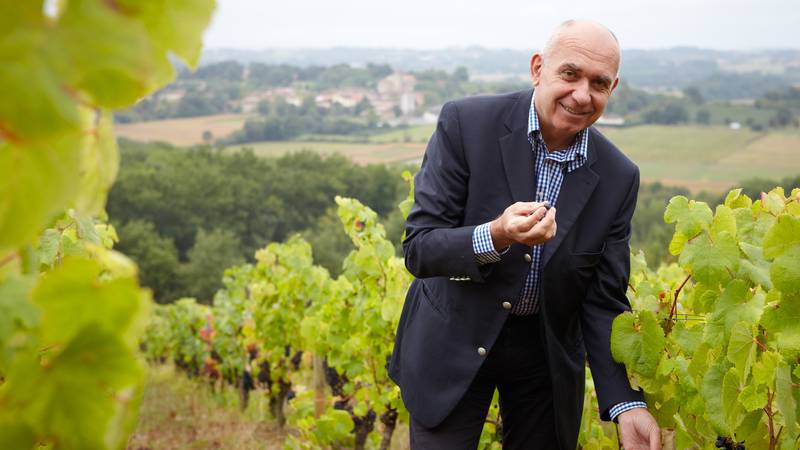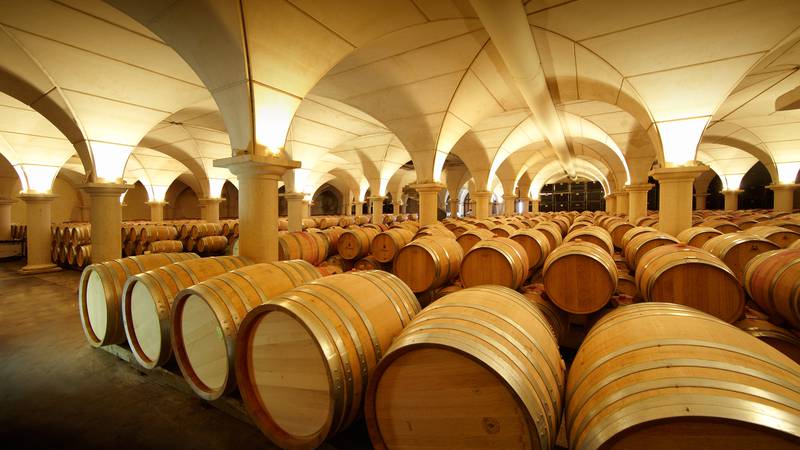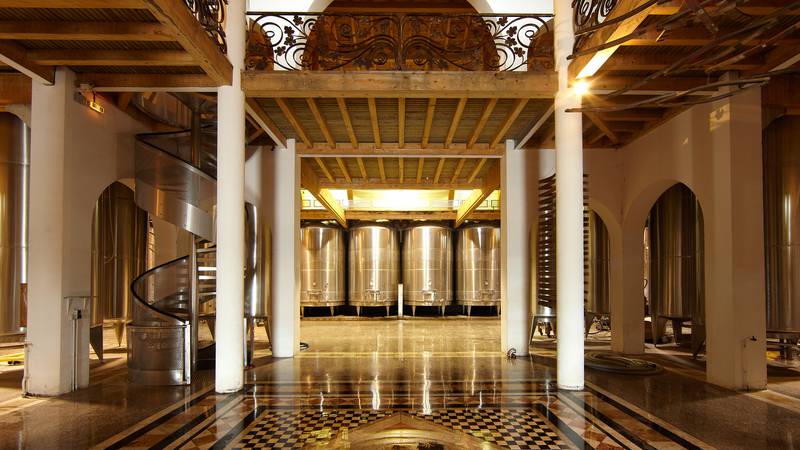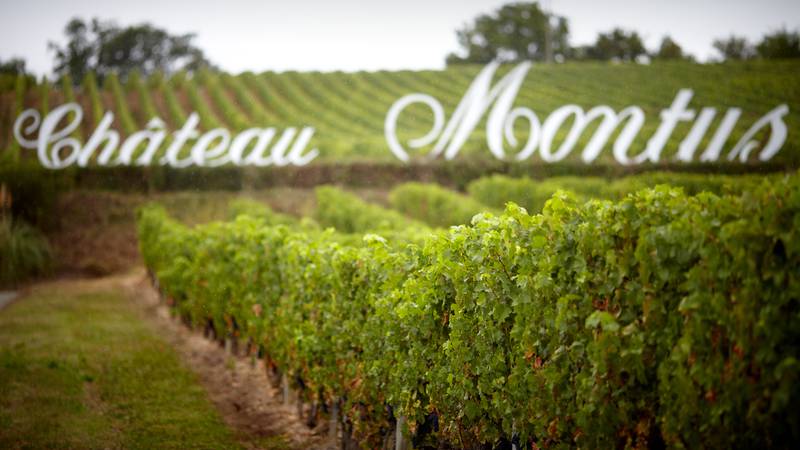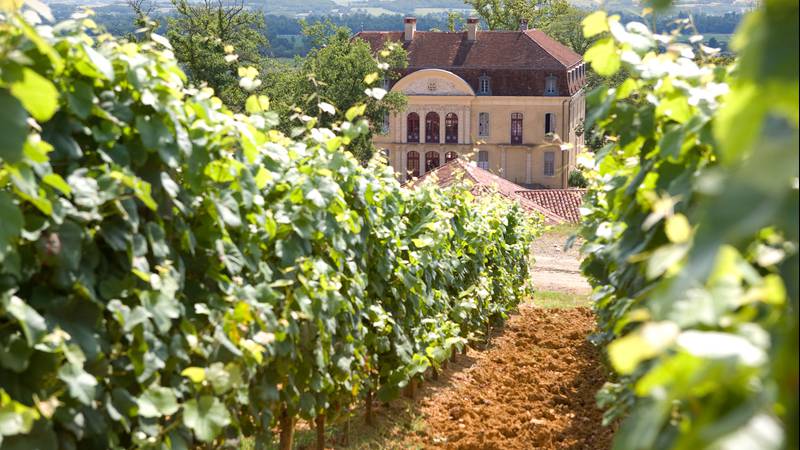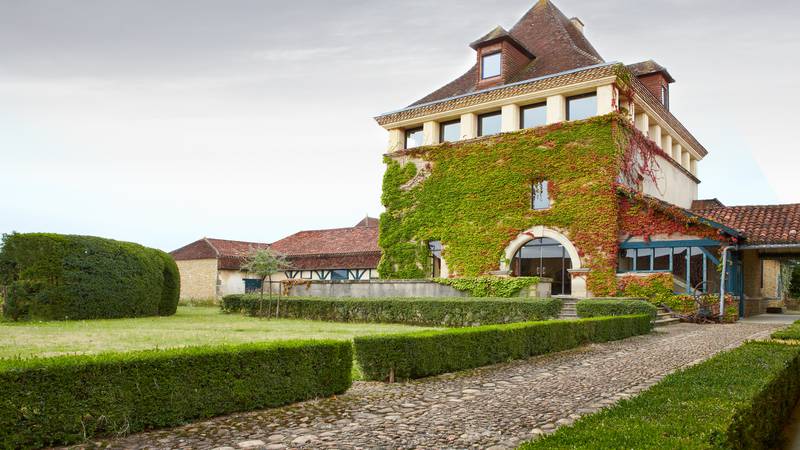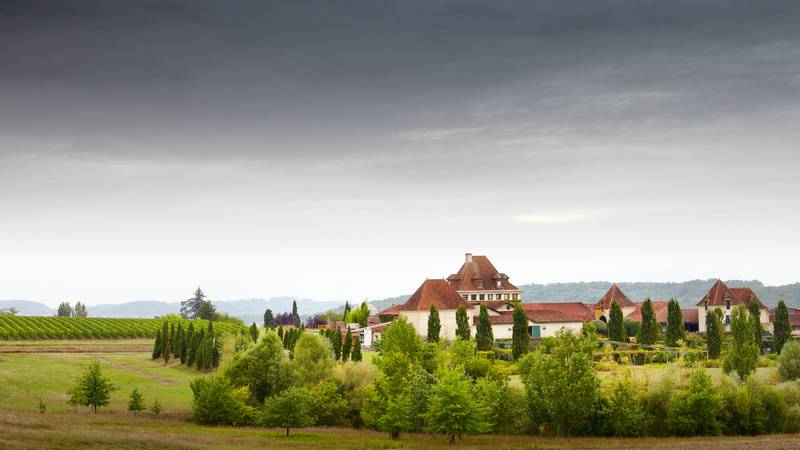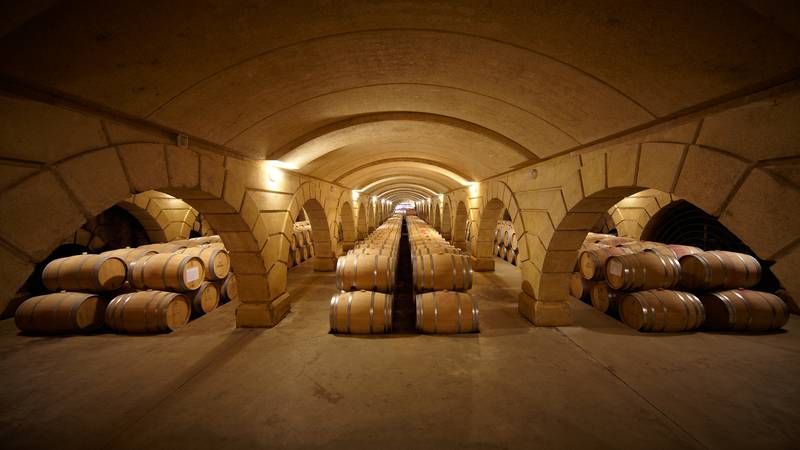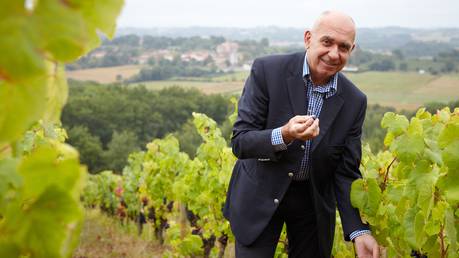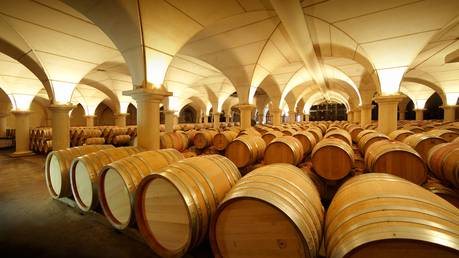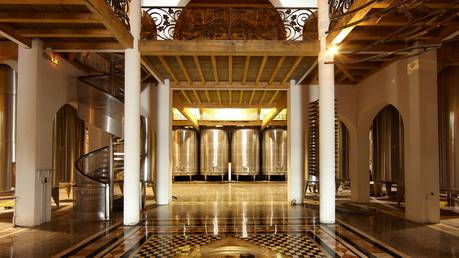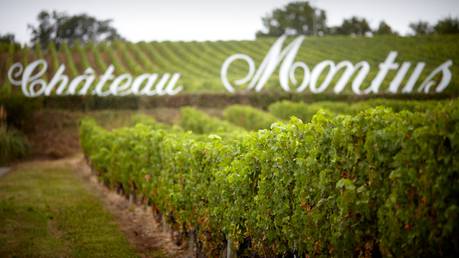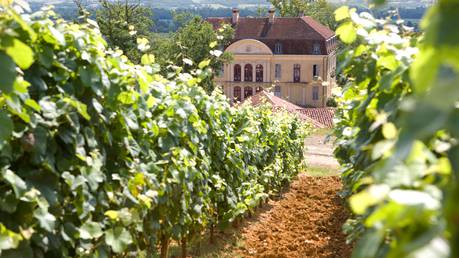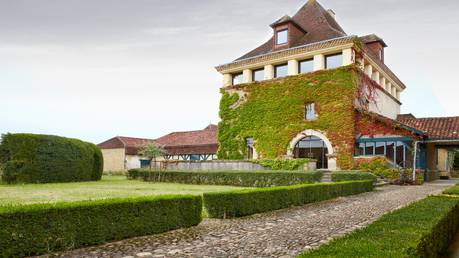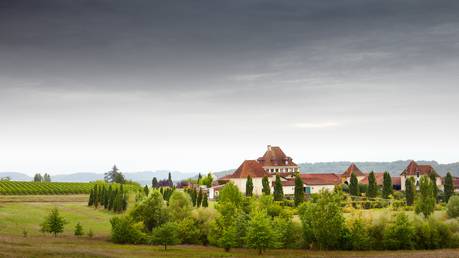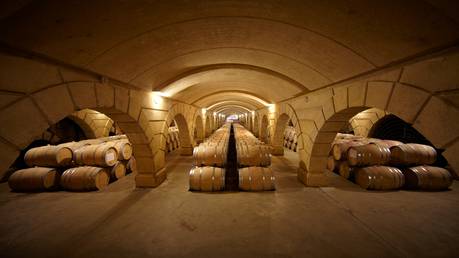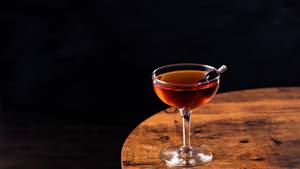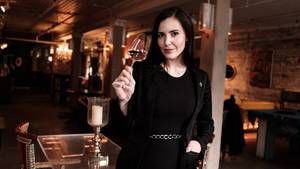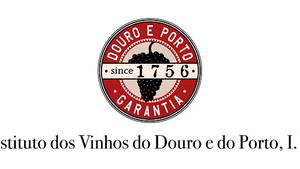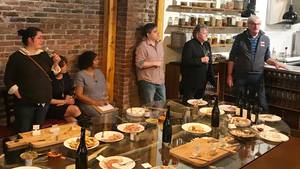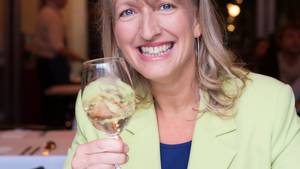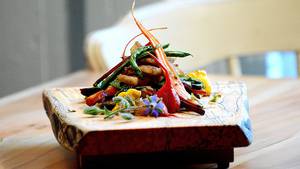Alain Brumont is described in his bio as “a tireless explorer of Gascon terroirs, promoter of local grape varieties, and a gardener who lovingly tends his vines. He is known as South-West France’s leading wine producer, who has re-established old terroirs that had been abandoned for 50 years.” Brumont is widely celebrated for his veneration of the Tannat grape variety and for the inky, intense and most age-worthy wines made thereof, some ‘softened’ with a portion of Cabernet Sauvignon and Cabernet Franc.
But this legendary ‘vigneron’ is a one of a kind, ahead of his time, iconoclast. Alain is the kind of figure that sends wine writers scurrying back to the books to dig for some clues and context. Consider this excerpt for Paul Strang’s 1994 edition of Wines of Southwest France:
“Brumont lives at the Château Bouscassé near the village of Maumusson halfway between Madiran and St. Mont. The property has been in his family for at least 8 generations. He recalls his great grandfather, a well-known local character...who made some Pacherenc as well as Madiran...The farm was typical of the system of polyculture. They grew all their own vegetables... raised geese and made their own bread and foie-gras ... they raised and killed their own pigs, a ritual which is continued to this day.”
Kim Gertler met up with the man from Madiran (and Côtes de Gascogne) and found out he’s still making Parenchec du Vic Bilh and Madiran and keeping the regional time-honoured traditions alive.
(The text of this interview has been translated from the original responses, in French.)
KG: TELL US A BIT ABOUT YOURSELF AND YOUR REGION
Alain Brumont (AB): I am from the southwest of France, a famous area for gastronomy and of course the wine culture that comes with it. Originally all of the historical varietals from Bordeaux come from the south west of France - they came to Bordeaux in the ninth or tenth century.
There are 43 sub-regions in the southwest, I am focused on the ones that are the most indigenous – I have 230 hectares. There are many indigenous varieties (cepages) in the southwest and I work with indigenous varieties. My family has been making wine since the seventh century. There’s been a lot of focus on the region because of the culinary specialties.
When I was 16, my father asked me to leave school to work on the family farm – I worked and learned from the age 16 to 30. In 1980 I decided I had to make my own wine and so by 1982 I had my own first vintage that was my own – truly my ownwine. 80 per cent of the vineyards were Tannat and 20 per cent Cabernet Sauvignon. I became the first vigneron to put these two powerhouse grapes together. I add the Cabernet Sauvignon to the Tannat to soften it – I was the first person to do this.
KG: WHY TANNAT?
AB: Tannat is part of our history – South West France is the spiritual home of Tannat and if you look at any of the literature from the 9th and 10th century you will see that it was the dominant grape – because I am from the southwest and it is the signature grape I wanted to focus on it. In the third century it was considered the ultimate grape – there was nothing that could touch it. This is long before Bordeaux was “a thing.” Tannat grows perfectly in the terroir of southwest France – it finds its expression in the steep slopes and heavy stone soils of the property’s terroir, the “petit gallets.”
I scouted and purchased both what would become Château Bouscassé and Montus specifically for their extreme terroir, comparable to Côtes Rotie and the petits gallets to the terroir of Châteauneuf-du-Pape. I have 10 different types of terroir and I am proud that you can tour many of the great soils of the world in 10 minutes on my property.
In 1985 I made a wine of 100% Tannat and it spent two years in oak barrels. Ultimately the cost of the barrels forced me to take measures to use oak more economically. I decided to enter my wines in competitions and I kept winning every time. So eventually I was asked to compete against the top five grand vins of Bordeaux where I was victorious once again.
It has always been my dream to make wines that would compete to be the best in the world and the wines have garnered a ton of attention, winning all kinds of top awards. Wine writers love me because I have one story and one alone – and that is Tannat and it is also the story of where I come from.
Because I was born in the southwest of France and the region is so focused on gastronomy, when I make my wines – I am thinking of wines that are fresh and powerful but the wines must always elevate and never overpower the food.
KG: WHAT IS THE “BRUMONT METHOD?’
AB: Some winemakers are all about the vineyard and others are all about the cellar - I do both – depending on the season I am either spending all of my time in the vineyard or all of my time in the cellar. That is step one of my method. I believe that things will grow better if you just let them grow naturally so I don’t want to kill the bugs or any of the fauna or flora – or any of the things that naturally occur in the vineyard. There are no vehicles that go up and down the vines because I don’t want the soil to be packed. I want it to be full of life so that when there are insects and bugs in the soil it’s healthier. Way back in 1985 I decided to stop using sprays and pesticides – I thought – if these trees on the property can grow without that – so can the grapes – so it’s not just natural viticulture – all things will flourish – including the grapes – but they have to be full of life – even the bugs and the birds play their role – the bugs help aerate the soil and they also are food for the birds – who might otherwise eat the grapes.
I also keep my yields very low and that way the vines make the grapes so much more intense…instead of two canes for bunches – I use only one and instead of allowing the usual average of 15 bunches per cane – I allow only 5 or 7 - that way all of that energy goes right from the vines to the grapes. Also each bunch must be a minimum of 20 centimetres apart.
They are 20 centimetres apart but the orientation of the row is such that the sun will start from this side and actually make its way all the way around – so that at the hottest point in the day - because the sun is so intense in the southwest of France – the cluster is in a position, so that the fruit is covered by the foliage – because the sun would otherwise burn the fruit. So, the orientation of each row I plant allows the sun to move around them in a way that every day every grape gets a full circle of sun.
KG: WHAT ARE YOUR THOUGHTS ABOUT SOMMELIERS? WHY DO YOU GO OUT OF YOUR WAY TO SPEND TIME WITH SOMMS? ARE SOMMELIERS IMPORTANT TO THE SUCCESS OF GREAT WINES?
AB: It depends on the country - in some countries the sommelier presence is very strong – Canada is amazing, Japan is very good, Sweden is very good but there’s not as many and they are not as focused in say – France or Italy or Spain – they are not such a strong presence or force. Absolutely - the sommelier community is incredibly important to me – they have been integral to my success – I have got an agency in this country, and I have an agency in my country - typical not unlike anyone else but what has made my wines so successful have been the sommeliers in those countries.
Especially with the prices of Bordeaux going up and up and up – sommeliers are searching for alternatives. If a bottle of Bordeaux is a thousand dollars they are trying to find something - for a hundred dollars - of the same quality. So the sommelier community has always embraced my wines for that reason – because the quality is so high and the prices are so reasonable.
At this point, Brumont’s wife, Laurence, who has been listening in so far, adds:
Laurence Brumont: They are also very popular with sommeliers because they are sommelier wines. Alain creates wines to go with food and they go together beautifully with food – sommeliers love that! They have championed Alain’s wines right from the start!
AB: I invite sommeliers frequently to come to visit, to study and to stay in what I call “the Brumont hostel” They come to study my approach to winemaking and to learn more about our wines and our wine and food culture. I believe that it is this interaction that is essential to the creation of the world’s very best sommeliers. It’s a holistic and mutually beneficial relationship.
KG: YOU SEEM VERY PHILOSOPHICAL IN YOUR APPROACH TO WINE – FOR EXAMPLE YOU MAKE STATEMENTS LIKE “I AM LIKE A VINE.”
AB: I am like a vine – we are all like vines – humans need to be nourished just like the vine does. We all need to breathe and we all need to breathe together. Every day at my winery we all work together and we eat together. My staff and workers do not pay for anything and we grow everything we eat, including the vegetables and the animals – everything comes from the property. It’s symbolic but it’s my way of saying there is no difference between a vine and a human, essentially.
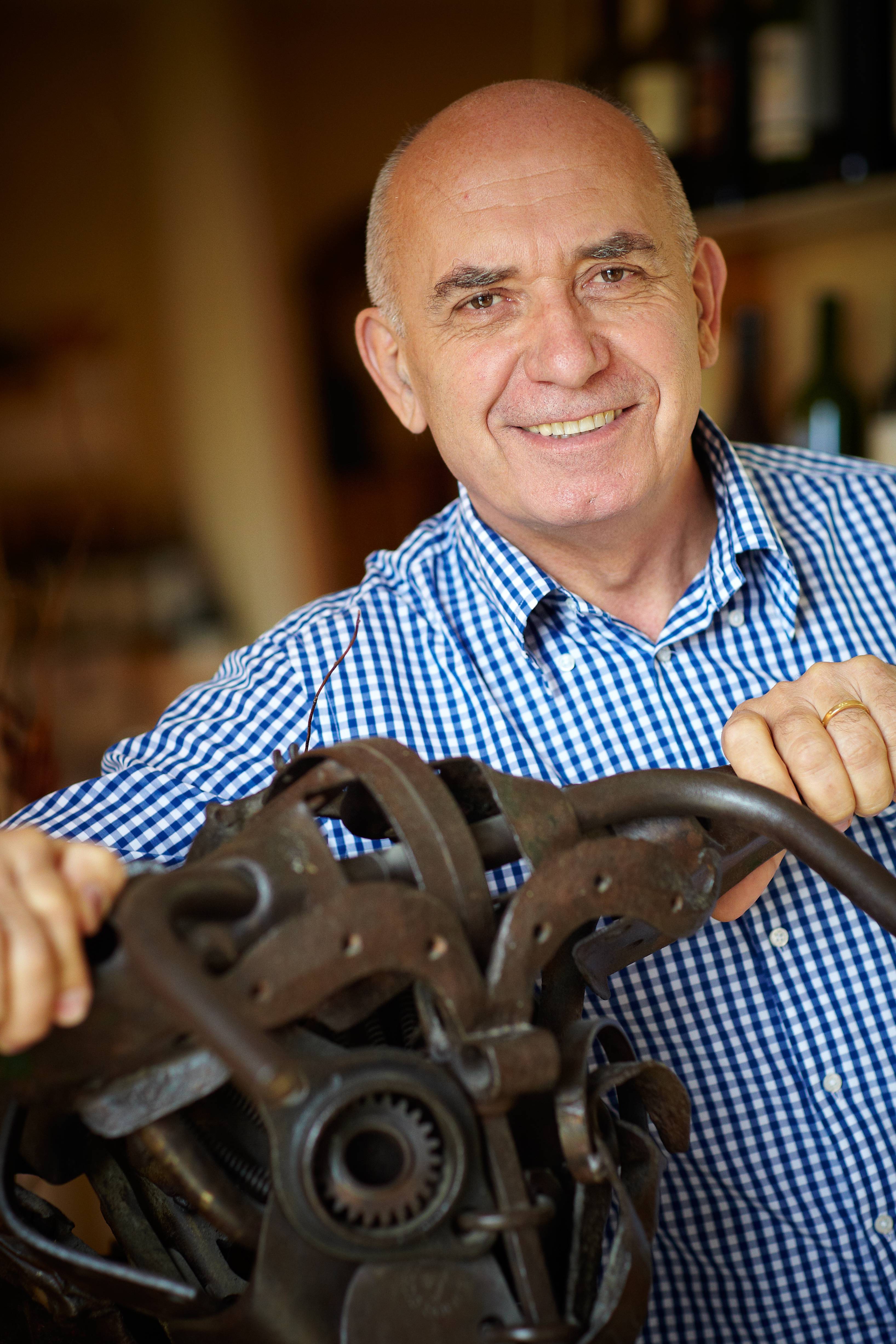
"If I eat foie gras, everyone gets foie gras" - Alain Brumont
KG: I GET THE SENSE THAT FOOD IS VERY IMPORTANT TO YOU.
AB: Gastronomy is so important to me and wine and gastronomy go hand in hand in the South West of France. It is so important. It’s why I do everything myself and don’t go out and buy anything. For example – did you know that the ham so popular and famous in Spain – the black pigs that create the famous Jamón ibérico – actually come from Gascogne? Some of my friends and have rejuvenated this tradition from many centuries ago.
My philosophy is that everyone needs to be nourished like the vines.
So even when there are 200 pickers working for me during the harvest – I feed them all and I feed them high quality food – because to make great wine you need great nourishment for strong workers – so if I eat foie gras, everyone gets foie gras.
KG: YOU HAVE BEEN CALLED MANY THINGS – THE KING OF MADIRAN – THE PRINCE OF TANNAT...MANY HAVE SAID YOU HAVE PUT WINE ON THE MAP IN MADIRAN – BUT THERE WAS TANNAT IN MADIRAN BEFORE YOU – WHAT WERE THE WINES LIKE IN THE PRE ALAIN BRUMONT ERA?
AB: They call me a prince, a king, the chef, Napoleon – I’ve even been called Louis the fourteenth! It’s really my attention to detail in the vineyard that has brought me these accolades – also – my non-interventionist approach to making the wines and of course because the grapes are of such high quality and the wines are so good. I feel I have created a different approach to winemaking in the South West of France than what was there before. There were no 100% Tannat wines – that was the big change and there were no icons to look up to. No one was fighting for the south west of France and it was my dream to be that and it has come to fruition but it’s the wines that have lead the way – more so than me, personally.
There are directors of wine and there are creators of wine – what is pivotal for me is that I attract creators – whereas entities like Petrus and DRC are more like directors – One of the pivotal points of my success is that I attract people who want to create something special. It’s very important for me. I am thrilled that many top award-winning sommeliers from around the world after winning major competitions – including the top somm from China, and from South Africa, seek me out to come and spend time with me at Château Montus – to learn about me and the wines of the southwest and our approach to winemaking – and that’s a great thing for me, too!
KG: TIME AND WINE ARE GREAT COMPANIONS AND YOUR WINES NEED SOME TIME – THESE ARE BIG BOLD WINES THAT DEFINITELY NEED SOME TIME TO REST IN THE CELLAR – HOW DOES THAT GO OVER IN THIS “DRINK NOW” MARKETPLACE?
AB: There’s only 2% of the wine purchasing public that cellar their wines. As long as there is still that 2% that means there are still people interested in buying his wines and that’s all I really need – in fact I only need the one per cent!
KG: THANK YOU FOR YOUR TIME AND FOR EVERYTHING THAT YOU HAVE DONE FOR YOUR REGION WITH YOUR WINES.

